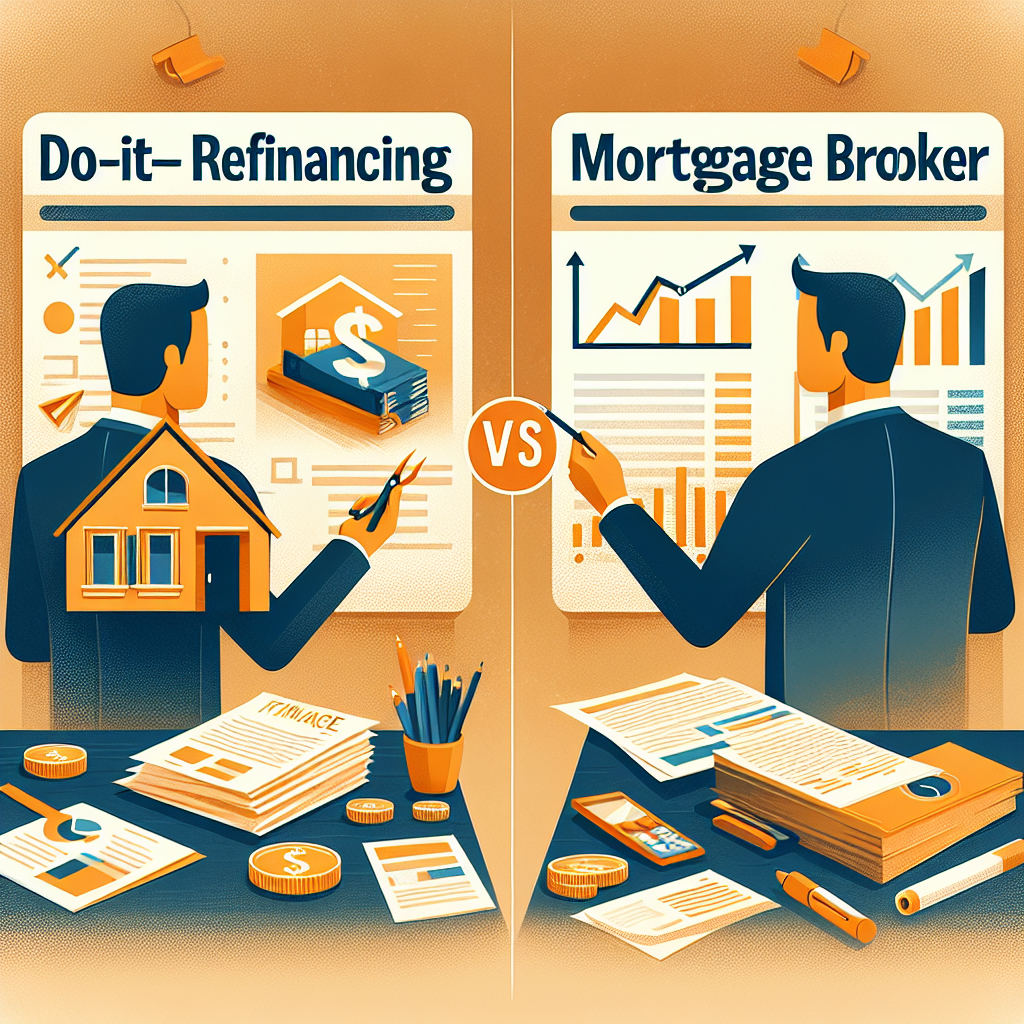When it comes to refinancing your mortgage, homeowners often face the decision between tackling the process themselves (DIY refinancing) or enlisting the help of a mortgage broker. Both options have their advantages and disadvantages, which can significantly affect your financial outcomes. In this comprehensive guide, we’ll explore the ins and outs of DIY refinancing and working with a mortgage broker, helping you to make an informed decision that aligns with your financial goals.
Understanding DIY Refinancing
What Is DIY Refinancing?
DIY refinancing refers to the process of tackling your mortgage refinancing without the help of professionals. This typically involves researching interest rates, comparing loan products, gathering documentation, and applying for a new mortgage all on your own.
Benefits of DIY Refinancing
-
Cost Savings: The most significant advantage of DIY refinancing is the potential cost savings. By avoiding broker fees, you can save thousands of dollars.
-
Full Control: You control the entire refinancing process, which allows for ultimate flexibility. You can choose the loan type, lender, and schedule that suits you best.
- Direct Communication: Engaging directly with lenders means there’s no intermediary. You receive information straight from the source, which can streamline the process.
Challenges of DIY Refinancing
-
Time-Consuming: Researching various lenders and loans can be a lengthy process. Homeowners may find this daunting, especially if they have a busy schedule.
-
Complexity: Refinancing involves numerous documents and technical terms. Without professional guidance, you may struggle to understand the terms and conditions of different offers.
- Limited Access to Lenders: DIY refinancing may restrict your options to mainstream lenders, whereas a broker can help you access a broader range of lending opportunities.
Working with a Mortgage Broker
What Is a Mortgage Broker?
A mortgage broker acts as an intermediary between you and potential lenders. They help you find the best refinancing options based on your financial profile and goals, facilitating the application process.
Benefits of Working with a Mortgage Broker
-
Expertise and Guidance: Mortgage brokers possess extensive knowledge of the mortgage market. They can guide you through the refinancing process, ensuring you understand your options.
-
Access to Multiple Lenders: Brokers have relationships with various lenders, which gives you access to a wider range of loan products and competitive interest rates tailored to your needs.
- Time Efficiency: Brokers can save you time by streamlining the process, taking care of paperwork, negotiations, and communication with lenders on your behalf.
Challenges of Working with a Mortgage Broker
-
Broker Fees: While brokers can save you money through better rates, they often charge a fee, which can offset some of the savings from refinancing.
-
Less Control: When working with a broker, you may have less direct involvement in the refinancing process, which can feel unsettling for some homeowners who prefer hands-on control.
- Variable Quality: Not all mortgage brokers are created equal. It’s essential to do your due diligence to find a reputable and knowledgeable broker.
Key Factors to Consider
Assess Your Needs
Before deciding between DIY refinancing and working with a mortgage broker, assess your financial needs, comfort level with financial terminology, and available time for research. If you’re confident in your abilities and have time to spare, DIY refinancing could be a great option. However, if you’re looking for expert advice and a more efficient process, a mortgage broker might be the better choice.
Compare Potential Savings
Calculate the potential savings from both options. Consider the cost of broker fees against the rates and terms they can secure for you. Sometimes, the expertise a broker provides can result in substantial savings, offsetting their fees.
Research and Due Diligence
For either choice, thorough research is essential. If opting for DIY refinancing, spend time comparing lenders and reading reviews. If choosing a broker, check their credentials, ask for referrals, and ensure they have a good track record.
Conclusion
Ultimately, the decision between DIY refinancing and working with a mortgage broker hinges on your unique financial situation, preferences, and comfort with the mortgage process. By weighing the advantages and challenges of both options, you can choose the path that aligns best with your refinancing goals. Whether you decide to go solo or seek professional help, the right choice can lead to a successful refinancing experience and significant savings over time.

